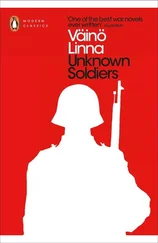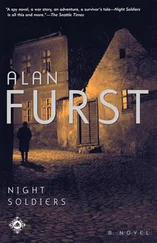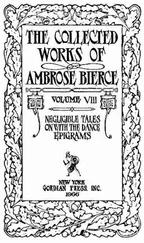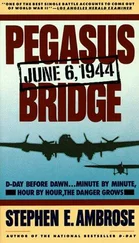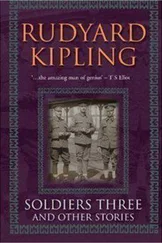Stephen Ambrose - Citizen Soldiers [Condensed]
Здесь есть возможность читать онлайн «Stephen Ambrose - Citizen Soldiers [Condensed]» весь текст электронной книги совершенно бесплатно (целиком полную версию без сокращений). В некоторых случаях можно слушать аудио, скачать через торрент в формате fb2 и присутствует краткое содержание. Жанр: История, на английском языке. Описание произведения, (предисловие) а так же отзывы посетителей доступны на портале библиотеки ЛибКат.
- Название:Citizen Soldiers [Condensed]
- Автор:
- Жанр:
- Год:неизвестен
- ISBN:нет данных
- Рейтинг книги:5 / 5. Голосов: 1
-
Избранное:Добавить в избранное
- Отзывы:
-
Ваша оценка:
- 100
- 1
- 2
- 3
- 4
- 5
Citizen Soldiers [Condensed]: краткое содержание, описание и аннотация
Предлагаем к чтению аннотацию, описание, краткое содержание или предисловие (зависит от того, что написал сам автор книги «Citizen Soldiers [Condensed]»). Если вы не нашли необходимую информацию о книге — напишите в комментариях, мы постараемся отыскать её.
Citizen Soldiers [Condensed] — читать онлайн бесплатно полную книгу (весь текст) целиком
Ниже представлен текст книги, разбитый по страницам. Система сохранения места последней прочитанной страницы, позволяет с удобством читать онлайн бесплатно книгу «Citizen Soldiers [Condensed]», без необходимости каждый раз заново искать на чём Вы остановились. Поставьте закладку, и сможете в любой момент перейти на страницу, на которой закончили чтение.
Интервал:
Закладка:
By no means were all the German personnel in Normandy reluctant warriors. Many fought effectively; some fought magnificently. The 3rd Fallschirmjdger Division was a full-strength division-15,976 men, mostly young German volunteers. It was new to combat, but training had been rigorous and emphasized initiative and improvisation. The equipment was outstanding.
Indeed, the Fallschirmjdger were perhaps the best-armed infantrymen in the world in 1944. So in any encounter between equal numbers of Americans and Fallschirmjagers, the Germans had from six to twenty times as much firepower.
And these German soldiers were ready to fight. A battalion commander in the 29th remarked, "Those Germans are the best soldiers I ever saw. They're smart and don't know what the word 'fear' means. They come in and they keep coming until they get their job done or you kill 'em."
These were the men who had to be rooted out of the hedgerows. One by one. There were, on average, fourteen hedgerows to the kilometre in Normandy. The enervating, costly process of making the attack, carrying the attack home, mopping up afterwards, took half a day or more. And at the end of the action there was the next hedgerow, 50 metres away. All through the Cotentin Peninsula, from June 7 on, GIs heaved and pushed and punched and died doing it-for two hedgerows a day. It was like fighting in a maze. Platoons found themselves completely lost a few minutes after launching an attack. Squads got separated. Just as often, two platoons from the same company could occupy adjacent fields for hours before discovering each other's presence.
Where the Americans got lost, the Germans were at home. The German 352nd Division had been training in Normandy for months. Further, they were geniuses at utilizing the fortification possibilities of the hedgerows. In the early days of battle many GIs were killed or wounded because they dashed through the opening into a field, just the kind of aggressive tactics they had been taught, only to be cut down by pre-sited machine-gun fire or mortars (mortars caused three quarters of American casualties in Normandy).
American army tactical manuals stressed the need for tank-infantry cooperation. But in Normandy the tankers didn't want to get down on the sunken roads, because of insufficient room to traverse the turret and insufficient visibility. But staying on the main roads proved impossible: the Germans held the high ground inland and had their 88-mm cannon sited to provide long fields of fire along highways. So into the lanes the tanks went. There they were restricted. They wanted to get out into the fields, but they couldn't. When they appeared at the gap leading into a field, mortar fire, plus panzerfausts (handheld antitank weapons), disabled them-often, in fact, caused them to "brew up," or start burning. The tanks had a distressing propensity for catching fire.
So tankers tried going over or through the embankments, but the hedgerows were almost impassable obstacles to the American M-4 Sher-man tank. The Sherman wasn't powerful enough to break through the cementlike base, and when it climbed up the embankment, at the apex it exposed its unarmoured belly to German panzer fausts. Further, coordination between tankers and infantry was almost impossible during battle, as they had no easy or reliable way to communicate with one another.
Lieutenant Sidney Salomon of the 2nd Ranger Battalion, one of the D-Day heroes, found that out on June 7. He was leading the remnants of his battalion, which had come ashore at Omaha and been involved in a daylong firefight on D-Day, westward along the coastal road that led to Pointe-du-Hoc. Three companies of the 2nd Rangers had taken the German emplacement there and destroyed the coastal guns, but they were under severe attack and had taken severe casualties. Salomon was in a hurry to get to them.
But his column began taking well-placed artillery shells. Salomon could see a Norman church, its steeple the only high point around. He was certain the Germans had an observer spotting for their artillery in that steeple. Behind Salomon a Sherman tank chugged up. Salomon wanted it to blast that steeple, but he couldn't get the crew's attention, not even when he knocked on the side of the tank with the butt of his carbine. "So I ultimately stood in the middle of the road directly in front of the tank, waving my arms and pointing in the direction of the church. That produced results. After a couple of shots from the cannon and several bursts from the .50-calibre machine gun, the artillery spotter was no more."
Salomon's daring feat notwithstanding, it was obvious that the army was going to have to work out a better system for tank-infantry communication than having junior officers jump up and down in front of tanks. Until that was done, the tanks would play a minor supporting role to the infantry-following the GIs into the next field as the infantry overran it. So as the infantry lurched forward in the Cotentin, following frontal assaults straight into the enemy's kill zones, the tankers began experimenting with ways to utilize their weapons in the hedgerows.
BEGINNING AT daylight on June 7, each side had begun to rush reinforcements to the front. The Americans came in on a tight schedule, long since worked out, with fresh divisions almost daily. The Germans came in by bits and pieces because they were improvising, having been caught with no plans for reinforcing Normandy. Further, the Allied air forces had badly hampered German movement from the start.
The German air force (the Luftwaffe) and the German navy were seldom to be seen, but still the Germans managed to have an effect on Allied landings through mines and beach obstacles. The most spectacular German success came at dawn on June 7.
The transport USS Susan B. Anthony was moving into her off-loading position off Utah Beach. Sergeant Jim Finn was down in the hold, along with hundreds of others in the 90th Infantry Division, set to enter the battle after the ship dropped anchor. Landing craft began coming alongside, and the men started climbing up onto the transport's deck, preparing to descend the rope ladders. Finn and the others were loaded down with rifles, grenades, extra clips, BARs (Browning automatic rifles), tripods, mortar bases and tubes, gas masks, leather boots, helmets, life jackets, toilet articles, baggy pants stuffed with cigarettes, and more.
"There was a massive 'boom!'" Finn recalled. "She shook. All communications were knocked out. All electricity was out. Everything on the ship went black."
The Susan B. Anthony, one of the largest transport ships, had hit a mine. She was sinking and burning. Panic in the hold was to be expected, but as Finn recalled, the officers took charge and restored calm. Then, "We were instructed to remove our helmets, remove our impregnated clothing, remove all excess equipment. Many of the fellows took off their shoes." They scrambled onto the deck.
A fire-fighting boat had pulled alongside and was putting streams of water onto the fire. Landing craft began pulling to the side of the ship. Men threw rope ladders over the side, and within two hours all hands were safely off-minutes before the ship sank.
Sergeant Finn and his platoon went into Utah Beach a couple of hours late and barefoot, with no helmets, no rifles, no ammo, no food. But they were there, and by scrounging along the beach they were soon able to equip themselves from dead and wounded men. Thanks to the fire-fighting boat-one of the many specialized craft in the armada-even the loss of the ship hardly slowed the disembarking process. The US, Royal, and Canadian navies ruled the English Channel, which made the uninterrupted flow of men and supplies from England to France possible. The fire-fighting boat that saved the men on Susan B. Anthony showed what a superb job the three navies were doing.
Читать дальшеИнтервал:
Закладка:
Похожие книги на «Citizen Soldiers [Condensed]»
Представляем Вашему вниманию похожие книги на «Citizen Soldiers [Condensed]» списком для выбора. Мы отобрали схожую по названию и смыслу литературу в надежде предоставить читателям больше вариантов отыскать новые, интересные, ещё непрочитанные произведения.
Обсуждение, отзывы о книге «Citizen Soldiers [Condensed]» и просто собственные мнения читателей. Оставьте ваши комментарии, напишите, что Вы думаете о произведении, его смысле или главных героях. Укажите что конкретно понравилось, а что нет, и почему Вы так считаете.
![Stephen Ambrose Citizen Soldiers [Condensed] обложка книги](/books/346737/stephen-ambrose-citizen-soldiers-condensed-cover.webp)
